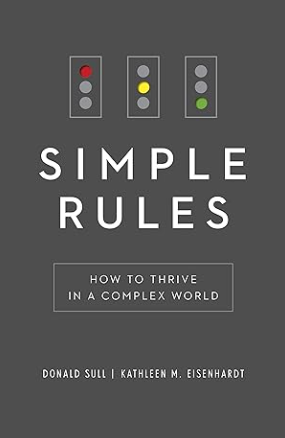Writing is about “forcing” your idea into others
Writing paper is not about marketing your idea or about conveying your idea to other people. Writing paper is more than that, it is a way to “force” your idea into people so that they use or implement your idea.

Writing a paper is not about marketing your idea or about conveying your idea to other people. Writing a paper is more than that, it is a way to “force” your idea into people so that they use or implement your idea.
That is, the essence of writing is to make people follow and implement our idea or method.
That is, writing has a very high goal and expectation. Indeed, writing is a powerful tool that we can leverage in all aspects of our daily life, for example, to publish research results and obtain research grants or funding, to market our product, to promote our company and many other uses.
We need to keep this writing goal or essence so that we can make our writing to be “strong” and “loud”. Only by a “strong” or “loud” writing, we can “force” people to follow our idea as well as implement the idea.
However, it is important to note that writing is not for boasting or exaggerating our ideas!
What we need to write should be based on factual results without any exaggeration or boasting beyond what the factual results say!
Next, some practical tips in writing (with examples) on how to use some words and arrange sentences so that the writing pushes our idea to other people to follow.
READ MORE: The most important tools for research
- Grammar Rules: Everything you need to know but never learnt in school – A book about how to make efficient and concise sentences to writing with military precision!
Practical tips to “forcing” your idea in writing
By knowing that writing has a high purpose to force our ideas into someone’s head, we will prepare our writing to be strong and clear. Yes, it is not an easy thing to do, but we need to try and develop this skill.
It is not easy, because to make somebody else to accept our idea and implement it in their activity or research or work, we need very strong words. It is even harder when the person already has made up their mind or they already used or implemented other ideas.
Next, a few practical tips on how to make our writing, especially scientific and technical writing, to be strong and clear and hopefully can “force” somebody else to adopt and implement our idea.
But again, do not fall into the fundamental mistakes: boasting or exaggerating findings or results in our writing!

The use of “however” or “Although”
These words “however” or “although” are like other common words. But their “power” when we insert them in a correct place in writing is tremendous. They will make our writing strong and loud.
But remember, we also need to show a strong justification to back up these words, otherwise, our writing will fall into “boasting” or “exaggeration”! we do not want this.
Remember, the simple formula is that a strong claim without a strong factual backup or justification will cause a boasting and/or exaggeration!
Example 1: Weak writing
There have been many studies about [A] both theoretically and experimentally. [X] have reported that their proposed model to understand the dynamics of [A]. This proposed model is supported by experimental results published by [B]. An improved model of [A] has been studied by [C]. The improved model can increase the accuracy of the experimental prediction by 20%. In our work, we improve and verify the model in [C] as well as validate this model with experiments. From experimental results, our model has a better accuracy up to 10% compared to the model proposed in [C].
In the writing above, the feeling of our contribution is not so strong. Yes, we mention the improvement, but it does not have a “biting” feeling.
Example 2: Strong writing
There have been many studies about [A] both theoretically and experimentally. [X] have reported that their proposed model to understand the dynamics of [A]. This proposed model is supported by experimental results published by [B]. An improved model of [A] has been studied by [C]. The improved model can increase the accuracy of the experimental prediction by 20%. However, the latest model does not consider the 2nd order non-linear effect. This non-linear effect in certain conditions can cause the accuracy of the model decrease by up to 30%.
In our work, we improve and verify the model in [C] by considering 2nd order non-linear factors as well as validate this model with experiments. From experimental results, our model has a better accuracy up to 10% compared to the model proposed in [C].
In the writing above, we can feel the strong essence of why we propose our model and results to readers by using the contradictive word “however”.

Explicitly mention your contribution
Not only strong, but also, we need to make our writing to be clear and explicit as much as possible. We should not assume that if we have a nice writing, in terms of grammar and structure, people will easily understand our contribution or our idea.
This is wrong. Because most people when they read an article, their mind is already occupied.
That is, their mind could already have their own idea, their mind is processing other things and so on. In a simple word, they won’t bother to try to spend a lot of time understanding our idea or contribution.
Hence, we need to explicitly mention or say our contributions or ideas are in our technical or scientific writing (but also for other types of writing).
The most obvious aspect is that we need to explicitly mention our contribution in the introduction section of our writing. The mention can be in bullet points or in a nice and flowing paragraph. The things are that ideas should be clearly said in the introduction or other early sections in our writing.
Example 1: Weak writing
By using the same paragraph as the previous example 2:
There have been many studies about [A] both theoretically and experimentally. [X] have reported that their proposed model to understand the dynamics of [A]. This proposed model is supported by experimental results published by [B]. An improved model of [A] has been studied by [C]. The improved model can increase the accuracy of the experimental prediction by 20%. However, the latest model does not consider the 2nd order non-linear effect. This non-linear effect in certain conditions can cause the accuracy of the model decrease by up to 30%.
In our work, we improve and verify the model in [C] by considering 2nd order non-linear factors as well as validate this model with experiments. From experimental results, our model has a better accuracy up to 10% compared to the model proposed in [C].
In the paragraph above, it is not explicit what exactly our contributions are. Which one is the main contribution in the above paragraph is not so clear whether it is the modeling or the experimental or both.
Example 2: Strong writing
There have been many studies about [A] both theoretically and experimentally. [X] have reported that their proposed model to understand the dynamics of [A]. This proposed model is supported by experimental results published by [B]. An improved model of [A] has been studied by [C]. The improved model can increase the accuracy of the experimental prediction by 20%. However, the latest model does not consider the 2nd order non-linear effect. This non-linear effect in certain conditions can cause the accuracy of the model decrease by up to 30%.
The contribution of our work is as follows. We improve and verify the model in [C] by considering 2nd order non-linear factors. An additional contribution is that our model is validated with controlled experiments. From experimental results, our model has a better accuracy up to 10% compared to the model proposed in [C].
In the paragraph above, we explicitly say our contribution. In addition, we clearly show which one is the main contribution and which one is the additional contribution.
READ MORE: Five common small writing mistakes that destroy an article
Conclusion
In this post, the essence of writing is discussed. Instead of promoting or conveying our idea, writing is to “force” our idea or thought to other people so that they follow and/or implement our idea.
In other words, “strong” or “loud” writing has a very high goal and significant use in all areas of life.
Remember, writing is not for boasting or exaggerating our ideas!
By realising the essence of writing, we can learn how to use words to support “forcing” our ideas into others. Some powerful words to start forcing your idea in writing is such as the use of “however” and “although”.
Some practical tips in writing, with examples, to force our idea to readers have been presented and discussed in this post.
Finally, keep writing your idea or results or whatever it is. Because, by writing, we also train our brain to think systematically.
You may find some interesting items by shopping here.
- Grammar Rules: Everything you need to know but never learnt in school – A book about how to make efficient and concise sentences to writing with military precision!